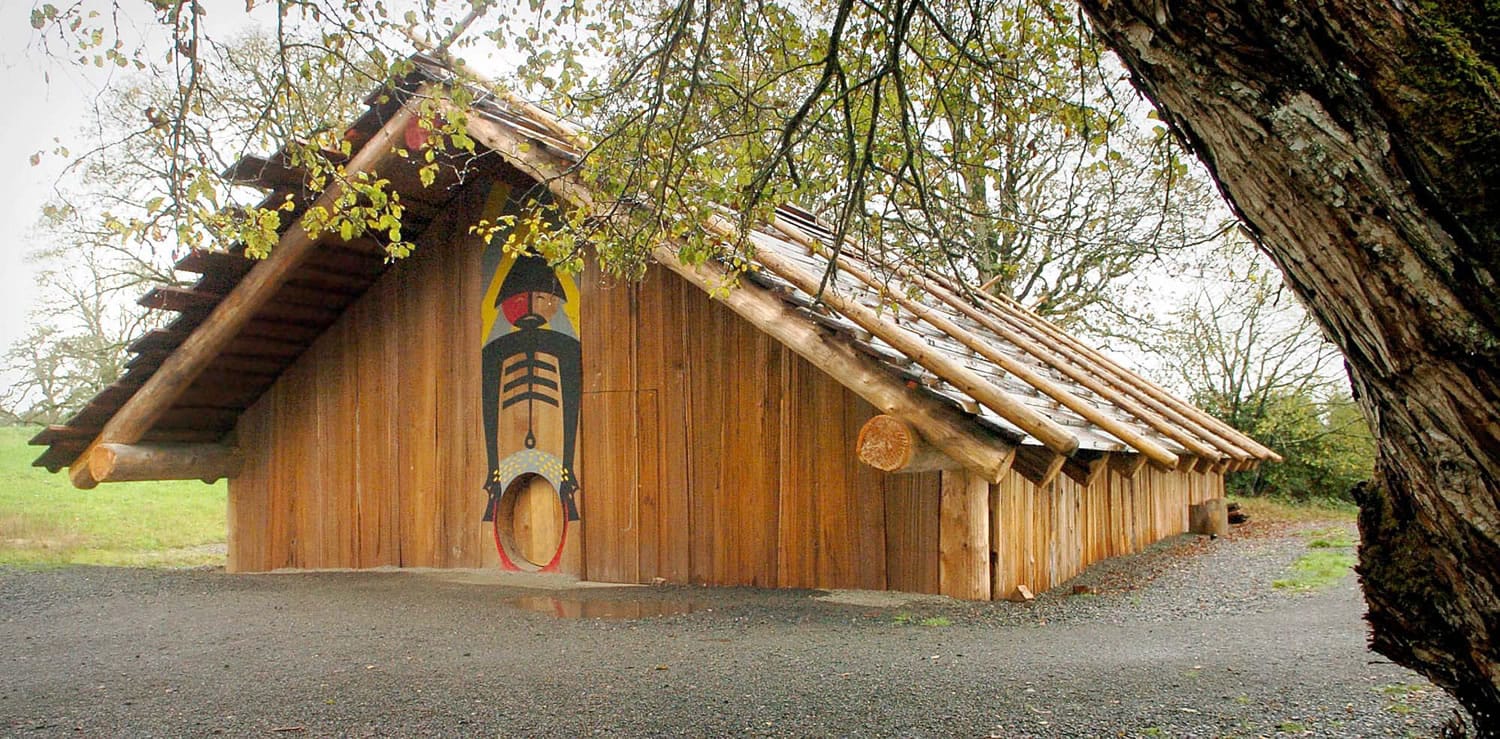Cathlapotle Plankhouse
What: Spring opening, featuring children’s activities and a guest lecture, “A Student in the Pacific Northwest: Sacagawea Travels the Columbia River,” by Robert Carriker.
When: Noon to 4 p.m. April 15.
Regular plankhouse hours: Noon to 4 p.m. Saturdays and Sundays.
Where: Ridgefield National Wildlife Refuge, Carty Unit, 28908 N. Main Ave.
Cost: $3 per vehicle.
Information: http://www.ridgefieldfriends.org or call 360-887-4106.
Before Interstate 5 Bridge lifts, chugging trains and the occasional smog of industry cropped up, the waterways of the Columbia River were a calmer, yet still busy place.
Chinook Indians paddled up and down, fishing and trading with neighbors or hunting elk, and gathering fruits and vegetables from nearby woods and grassy shores.
Cathlapotle Plankhouse
What: Spring opening, featuring children's activities and a guest lecture, "A Student in the Pacific Northwest: Sacagawea Travels the Columbia River," by Robert Carriker.
When: Noon to 4 p.m. April 15.
Regular plankhouse hours: Noon to 4 p.m. Saturdays and Sundays.
Where: Ridgefield National Wildlife Refuge, Carty Unit, 28908 N. Main Ave.
Cost: $3 per vehicle.
Information: <a href="http://www.ridgefieldfriends.org">http://www.ridgefieldfriends.org</a> or call 360-887-4106.
Along the waterways, almost like ports, were large buildings called plankhouses, central structures where 50 to 200 tribal members would live, work and eat together.
“It was a life that focused on the rivers and waterways of the region,” said Anan Raymond, regional archaeologist with the U.S. Fish and Wildlife Service. “What is interesting about the Chinookan adaptation to the Pacific Northwest is that they were hunters, gatherers and fishers, but they were not nomads. They built buildings and settlements that stayed there for hundreds of years.”
Explorers Meriwether Lewis and William Clark visited one of those dwellings on March 29, 1806, as part of their exploration of the region. At the time, the village of Cathlapotle, in present-day Ridgefield, was home to about 900 Chinook Indians who lived in several plankhouses.
“When they visited, they would have seen a lot of things going on,” said Katie Harrison, plankhouse director for the Friends of Ridgefield National Wildlife Refuge. “The plankhouse was a house in every sense of the word. Everything we do in our homes, they would have done there. Sleeping, cooking, making trade goods and even making art.”
The Cathlapotle Plankhouse, a re-creation of one of those historic venues, was built in 2005-2006 as part of the Lewis and Clark bicentennial celebration. The plankhouse, which was closed for the winter, will open for the season on Sunday from noon to 4 p.m.
The structure was built with the help of the Chinook Nation and by looking at sketches and documents from the expedition in 1806.
“Tribal members use the building for ceremonies sometimes,” Harrison said. “They’re the only ones that are allowed to use the fire pits. And any changes we make in here, we run it by the Chinookan Nation first.”
There are several archaeological plankhouse sites around the Ridgefield National Wildlife Refuge, and through carbon dating and other methods, it appears that tribes had been building the structures for 2,000 to 2,500 years before Anglo settlers arrived in the region, Raymond said.
“All along the Columbia, we have the remains of seven to 14 houses that were basically in the same spot for hundreds of years,” Raymond said. “Cathlapotle, from charcoal dating, appears to have been built around 1450, and it was abandoned by around 1840.”
Tribes would use the same structure — repairing bad planks or posts — for as many as 400 years. They would abandon them and build new ones only when the river shifted course, he said.
“It’s a completely different way of mapping on the landscape than we do today,” Raymond said. “Most of us are transplants here, we move from place to place, town to town at the drop of a hat. But these people, they gathered around hearths that their great-great-grandparents built.”
Residents of plankhouses also weren’t particularly disturbed by seasonal flooding, he said.
“There’s some historical evidence that they’d move and hang out in the hills next door for a few weeks,” Raymond said. “But we have evidence that they always returned to the town site right after the flooding.”
Because floods came on slowly, the tribes had time to removed stored goods, furs and bedding before the waters came.
“It’s also very possible that flooding had a benefit, because it basically cleaned the place out,” Raymond said.
The building is called a plankhouse because cedar trees used in construction were split along wood grains in a method that created long planks. Nobody is sure exactly where the cedar came from, although it does grow in the region.
“There’s not a lot of cedar around the site today,” Raymond said. “They may have felled trees and floated them down river; there could have been more there at the time.”
The site was abandoned in the 1840s after disease ravaged the native population, Harrison said.
“It was almost all gone by the mid-1800s; 80 to 90 percent of the population was hit,” she said. “It was pretty dramatic. Those left after the epidemics swept through were absorbed by other tribes.”
The building is open weekends from April to mid-October, and on select weekdays for school groups. About 30 volunteers maintain it and provide tours.
The seasonal opening on Sunday will include a lecture about Indian guide Sacagawea at 2 p.m. by Robert Carriker, professor in the College of Arts and Sciences at Gonzaga University, who has written several books on Lewis and Clark. There will also be children’s activities and plenty of opportunities to learn more about the area and its history, Harrison said.



